This article was medically reviewed by Jonas DeMuro, MD. Dr. DeMuro is a board certified Pediatric Critical Care Surgeon in New York. He received his MD from Stony Brook University School of Medicine in 1996. He completed his fellowship in Surgical Critical Care at North Shore-Long Island Jewish Health System and was a previous American College of Surgeons (ACS) Fellow.
This article has been viewed 138,866 times.
Your pinky toe is the smallest toe on the outer edge of your foot and can become injured due to tripping, falling, stubbing it on something, or dropping something on it. A broken toe may appear swollen and bruised, and it may feel painful when you walk on it. Most broken pinky toes heal on their own within six weeks and do not require immediate medical attention beyond an exam to make sure it has not been seriously fractured. If you can see bone poking out of the skin of your pinky or if your toe is pointing in the wrong direction, you should head to the emergency room right away.
Steps
Doing Immediate Treatment
-
1Remove your shoes and socks, if necessary. Treating your broken toe within the first 24 hours of the injury is crucial to ensuring it does not get infected or become too swollen. Take off any constricting items on your toes, such as socks or shoes.[1]
- Once your toe is exposed, examine it to ensure no bones have broken through your skin. You should look closely to make sure your toe is still pointing in the right direction, despite the break, and does not appear blueish or feel numb to the touch. These are all indications that it is safe to treat the toe at home.
-
2Raise the affected leg above your waist. Sit down on a comfortable, stable surface. Place your foot on a stack of pillows or on a chair. Raise the leg to above your waist to reduce the swelling on your pinky toe.[2]
- Raising the affected leg will also help to reduce the pain of the broken pinky toe.
- You should try to keep your foot elevated as much as possible, even after the first 24 hours. Rest and elevation will help your pinky toe to heal. If your feet get cold, use a light blanket over your feet like a tent so there is very little pressure on your broken toe.
Advertisement -
3Ice the toe for 10 – 20 minutes. For the first 24 hours of the injury, you should ice your toe to reduce swelling and pain. Wrap an ice pack in a towel and apply it to the toe for 20 minutes once an hour.[3]
- You can also wrap a bag of frozen peas or corn in a towel and use it as an ice pack.
- Do not leave the ice pack on for longer than 20 minutes at a time and never apply ice directly to your skin as this can lead to further injury.
-
4Take pain medication. Take ibuprofen (Advil, Motrin), acetaminophen (Tylenol) or naproxen (Aleve, Naprosyn) for pain relief. Follow the dosage instructions on the label.[4]
- Children under the age of 18 should not be given aspirin.
- Do not take pain medication if you have high blood pressure, diabetes, or any bleeding disorders, such as ulcers.
Doing Home Care
-
1Tape the pinky toe to its neighbor. After 24 hours, the swelling should start to go down if you properly elevate and ice the toe. You can then buddy tape your broken pinky toe to its neighboring toe to help stabilize it.[5]
- Place a cotton ball between your pinky toe and the toe next to it. Wrap the pinky toe with medical tape and then wrap the pinky toe to the neighboring toe. Make sure the tape is snug around your toes but is not cutting off blood circulation to your toes. It just needs to be tight enough to provide some support to the broken toe.
- You should change the cotton ball once a day and re-wrap the toes together so the area stays clean and stable.
-
2Avoid wearing shoes or only wear open-toed shoes. Do this until the swelling goes down and your toe starts to heal. Once the swelling is gone, you should wear shoes with a solid, comfortable sole to protect your toe.[6]
-
3Start walking again once your toe begins to heal. If you can wear shoes comfortably without irritating your broken toe, it may okay to start walking around on it. Go easy and only walk for short periods of time, as you do not want to put too much pressure or stress on your healing toe. Your toe may feel sore or stiff when you walk but this should go away once your toe starts to stretch out and get stronger.[7]
- After walking around, you should check the toe for any swelling. If it appears swollen or irritated, ice it for 20 minutes every hour and elevate it.
- Most broken toes will heal with the proper care within four to eight weeks.
Seeking Medical Care
-
1See your doctor if the break appears severe and is very painful. You should see a doctor right away if your toe is numb for a prolonged period of time or tingles continuously. You should also see a doctor if the bone appears to be broken at an angle and there is an open wound on your toe or any bleeding.[8]
- You should also seek medical care if your toe does not heal properly within one to two weeks and is still very swollen and painful.
-
2Let your doctor exam in your toe. Your doctor will likely request an X-ray of your broken toe to confirm the break. She may then numb your toe with a local anaesthetic and realign the bone through the skin.[9]
- If there is any blood trapped under the toenail of the broken toe, your doctor may drain the blood by making a small hole in your nail or by removing the nail.
-
3Discuss surgery on the toe if the break is severe. Depending on the severity of the break, you may require surgery on the toe. Special pins or screws will be inserted into the broken bone to keep it in place while it heals.[10]
- You may also need to support the toe in a cast. You may be given crutches so you can walk without putting any weight on the toe and to allow it to heal properly.
-
4Get antibiotics, if necessary. If bone has pierced through the skin (this is known as an open fracture), there is a serious risk of infection. You will need to clean the wound regularly and you may be prescribed antibiotics to prevent infection.[11]
- If your vaccinations are not up to date, your doctor may give you a tetanus shot to further prevent infection.
References
- ↑ https://www.nlm.nih.gov/medlineplus/ency/patientinstructions/000520.htm
- ↑ http://www.nhs.uk/conditions/broken-toe/Pages/Introduction.aspx
- ↑ https://www.nlm.nih.gov/medlineplus/ency/patientinstructions/000520.htm
- ↑ https://www.nlm.nih.gov/medlineplus/ency/patientinstructions/000520.htm
- ↑ https://www.nlm.nih.gov/medlineplus/ency/patientinstructions/000520.htm
- ↑ https://www.nlm.nih.gov/medlineplus/ency/patientinstructions/000520.htm
- ↑ https://www.nlm.nih.gov/medlineplus/ency/patientinstructions/000520.htm
- ↑ http://www.nhs.uk/conditions/broken-toe/Pages/Introduction.aspx
- ↑ http://www.nhs.uk/conditions/broken-toe/Pages/Introduction.aspx
About This Article
To treat your broken pinky toe, your first priority will be reducing any swelling. To do this, keep your leg raised on a chair or cushion while sitting down. Avoid wearing shoes until the swelling’s gone down, since this can make it worse. For the first 24 hours, hold an ice pack wrapped in a towel to your toe for 20 minutes every hour. If your toe feels numb or tingles for a prolonged period of time, visit a doctor, since there might be complications with the break. After the first day, place a cotton ball between your pinky and the next toe, then tape the 2 toes together. This will help support your pinky while it heals. When you can walk without irritating your broken pinky toe, try going for short walks so you don’t put too much pressure on it. If your toe becomes swollen again, keep it raised and apply an ice pack again. For more tips from our Medical co-author, including how surgery can fix a severely broken toe, read on.





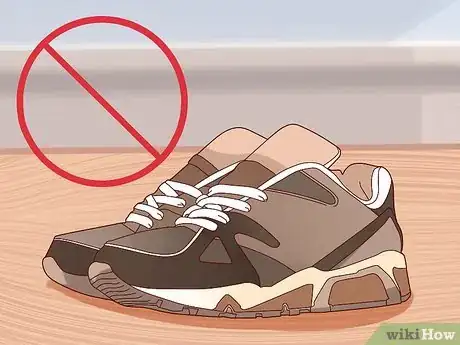
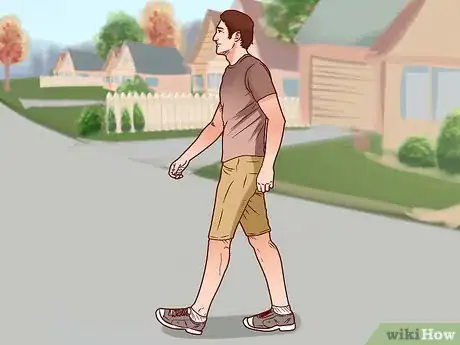

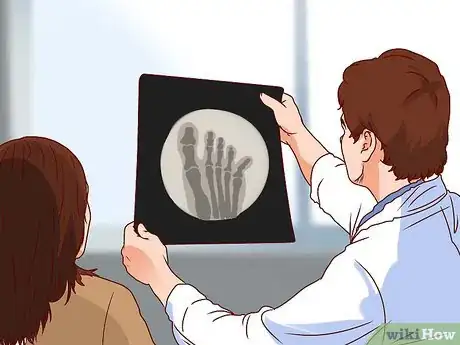






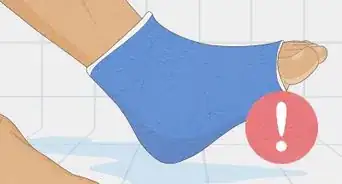

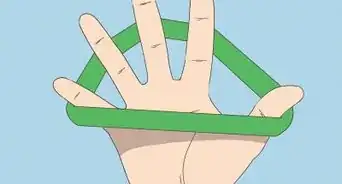

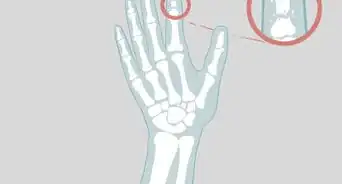



















































Medical Disclaimer
The content of this article is not intended to be a substitute for professional medical advice, examination, diagnosis, or treatment. You should always contact your doctor or other qualified healthcare professional before starting, changing, or stopping any kind of health treatment.
Read More...